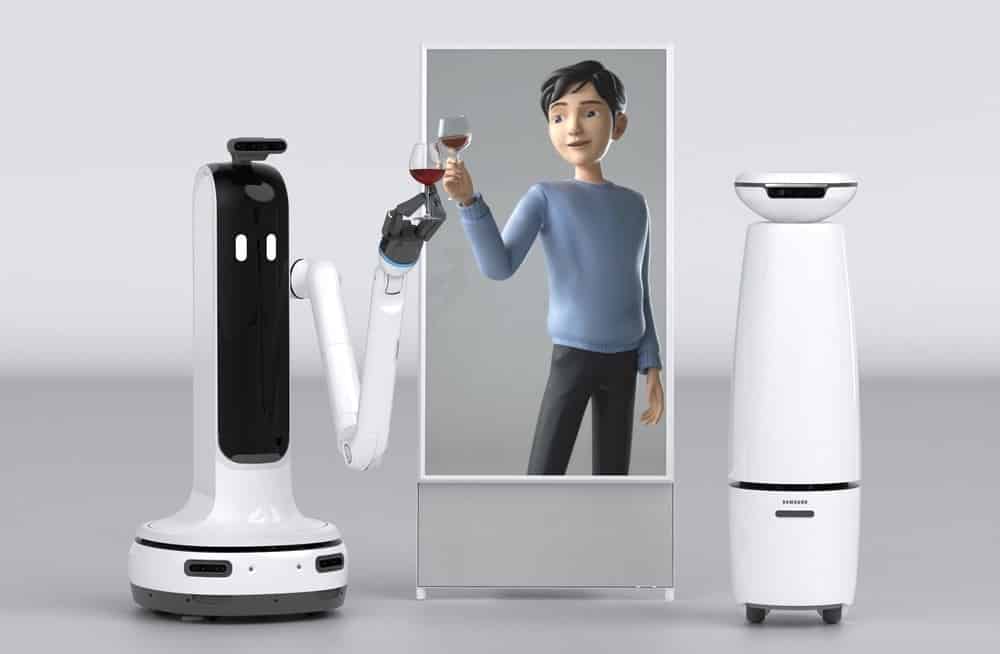
With the advancements in artificial intelligence, we have become accustomed to machines handling certain tasks such as answering support chat, summarizing reports, and even responding to emails on our behalf. Robots have been present in our homes for quite some time, with dishwashers being a prime example. Recently, we have seen the emergence of Roombas, which autonomously vacuum our living room. As robots continue to evolve, they are gradually taking over physical tasks such as laundry and even home repairs. What can we outsource to these intelligent machines, and what is their current potential in everyday life?
Robot Vacuums: The Future of Cleaning
Robot vacuums are an increasingly popular choice for automating their cleaning. These robots use sensors to detect dirt and debris and then move around the room autonomously, vacuuming up the mess.
This type of robot can save you time and energy while keeping your home looking spotless. In addition, some models can mop floors, scrub tile surfaces and even clean windows. With the right robot vacuum, you can get your chores done without lifting a finger.
Robots for More Complex Tasks
Robots are capable of performing more complex tasks than just vacuuming. For example, robots can be used for gutter cleaning, floor mopping and grilling. Additionally, they can be adapted to our needs to make it easier for them to perform certain tasks.
Robots may become companions in household tasks in the near future. For example, the Furo Robotics Furo-C robotic arm is designed to help with kitchen tasks such as stirring, pouring and transferring food. This type of robot has the potential to help care for an aging population by tending to those who need physical help.
AI-powered robots are being developed for simple repetitive tasks in fulfillment centers and retail stores. Lowe’s has developed the LoweBot which is designed to navigate autonomously through store aisles and interact with customers by answering basic questions about products and services. This type of robot is equipped with a 3D camera to recognize objects and respond accordingly.
The robotics industry is already worth hundreds of billions of dollars with further advances expected to multiply this figure. With the continued development of AI algorithms and machine learning technology, robots will become increasingly capable of taking over physical tasks which require vision and judgement.
Adapting Robots to Everyday Tasks
Robots have become increasingly ubiquitous in recent years, taking on a wide range of tasks from flipping burgers to cleaning dishes. However, in order to be effective at performing everyday tasks, robots must possess the ability to identify objects, manipulate them with precision, and execute a sequence of actions. To this end, Dishcraft Robotics is at the forefront of developing robots that automate the process of dishwashing in commercial kitchens. By leveraging machine learning and computer vision, these robots are able to inspect each dish before cleaning them using a rotating scrubber head. This represents a fundamental shift in the way that automation is approached, as robots are increasingly being designed to complement human workflows rather than humans adapting their workflow to a machine.
In order to adapt robots to everyday tasks, engineers must first identify the needs of the task. For example, when it comes to cleaning dishes, they must consider the size and shape of the dishes, as well as any debris that might be present on them. They must also consider how much force is needed to clean each dish without damaging it. Once the task is identified, the engineers must then design a robot capable of executing it.
Integrating Robots Into Our Everyday Lives
Samsung recently teased its new domestic household helper robot at this year’s virtual-only CES. The robot, named ‘Bot Handy’, was shown loading dishes into the dishwasher, while two other robots are meant to be a cross between a smart vacuum and a security camera, and an assistant and companion. Integrating robots into our everyday lives is not just about designing and building them; it is also about training them. This means teaching them how to recognize objects, how to pick up and manipulate them, and how to respond to various situations.
The Future of Intelligent Robots
As robots become more intelligent, they will be able to take on more physical tasks that require vision and judgement. In the future, we could see robots performing home repairs or even helping out with gardening or cooking. We could also see them taking on more complex tasks such as home security or providing companionship.
As robots become more sophisticated, they are being developed to help with mundane household tasks such as laundry and dishwashing. Laundry-folding machines such as the Japanese Laundroid and the machine developed by Rethink Robotics can take care of folding clothes. These machines use AI algorithms and soft grippers equipped with a sense of touch to reliably operate without damaging any items. Honda has also created concept robots which can act as guides or assistants for disabled or ailing humans. Toyota Research Institute has invested $1 billion to develop robotic technologies that can clean, pick up objects and load dishwashers. These robots could help elderly people stay in their homes longer, reducing the need for assisted living facilities. Boston Dynamics has created robots that can open doors, run and jump to detect and respond to security threats.

